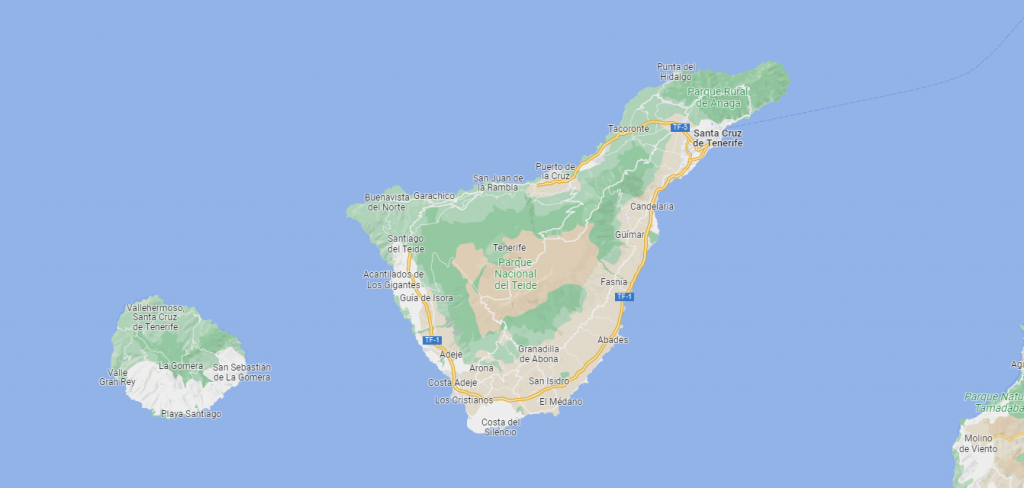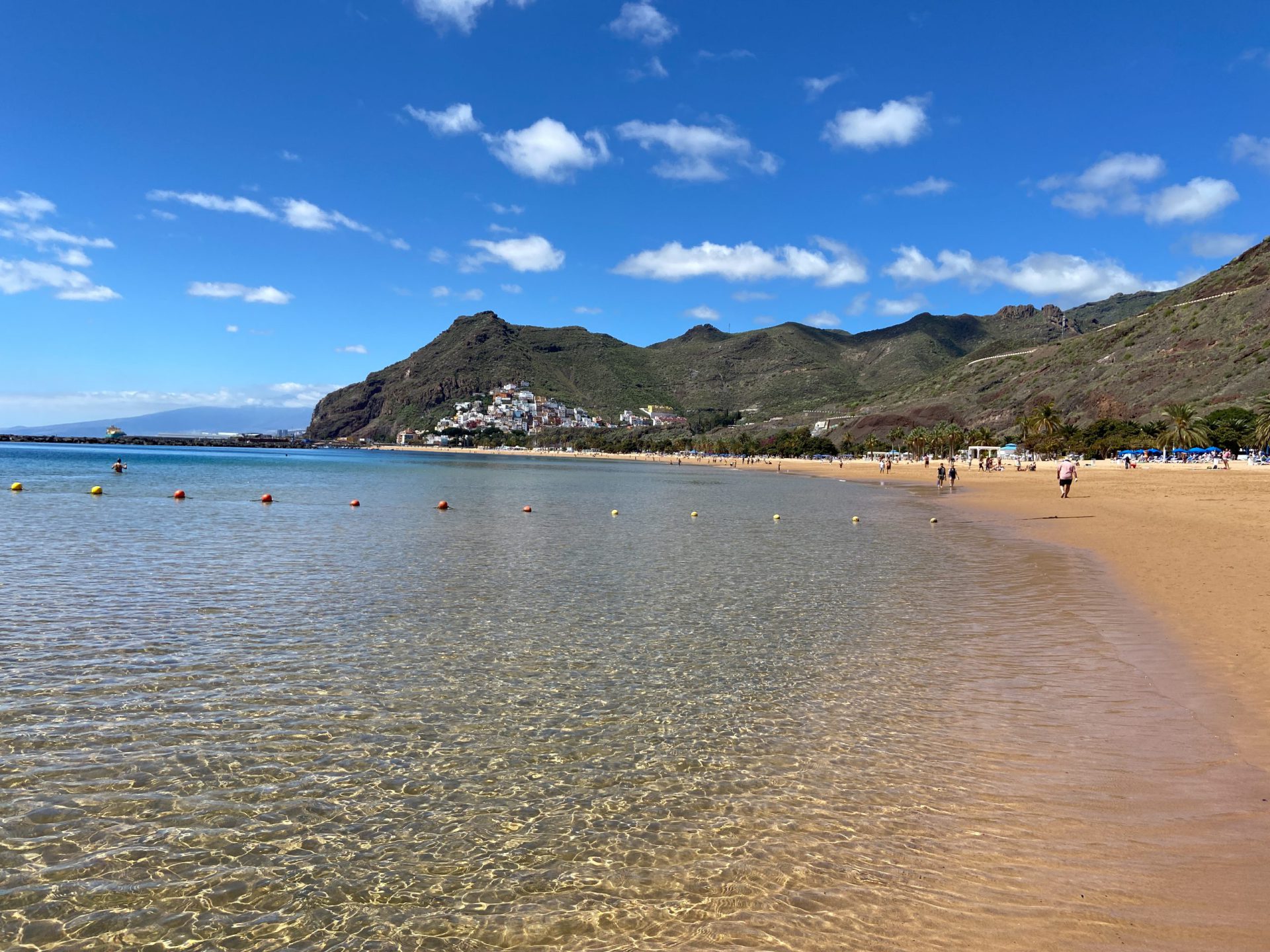Looking for a reasonably priced week in the sun in spring, Tenerife looked like a good option. Though well known with British holiday makers, we were more interested in the northern part of the island and first headed to the capital Santa Cruz. We purchased a bus pass that would cover us for a week and jumped on the bus to Santa Cruz from the airport.
We had booked an apartment in the city and this would make a good base for exploring its attractions. The city waterfront is mainly a port though there is some seafront near the opera house building. Our first couple of days we explored the center of the city and along the coast. With its backdrop of the Anaga mountains to the north it was a pleasant place to be and its squares and varied architecture made for plenty of photos. The TEA exhibition center was another interesting cultural site with its modern architecture, library and range of exhibitions entertaining for a few hours. When we wanted beach time Las Terisitas was a beautiful beach a short bus ride away with its Saharan sand and lagoon not too busy. The small fishing town of San Andreas with houses perched up the hillside making a photogenic backdrop.
The Palmetum on a hill by the waterfront had many species of palm from right around the world and was a pleasant place to wander in the late afternoon. We had four days in Santa Cruz and there was certainly more to see.

We next took the bus to Puerto de la Cruz stopping off at La Laguna on the way. La Laguna having a grid of old houses to walk round with interesting doors and hidden court yards to search out. It was definitely worth stopping off.
Puerto de La Cruz was one of the original resorts on Tenerife before the southern resorts were built. It has a different character to those resorts and the visitors seemed much more international from all over Europe. The resort has black volcanic sand beaches and the sea pounded in the whole time we were there. Only the surfers were out in these waves, though some of the tourists would stand knee deep in the breakers then finding themselves waist deep.
The town is built on a hillside and a short bus ride up the hill is the botanical gardens. This had many beautiful tropical plants centered around a huge South American tree with intertwined branches. Walking down from here is an amazing view point of the beaches to the east of the town with the heavy seas crashing against the rocks.
Past the Playa Grande on the west side of the town is Puntas Bravas, a picturesque headland of old Spanish houses. Watching the sun go down over this from the town is a favourite for visitors with the black sand beach in the foreground.
For our last two nights we chose El Medano – a tip from a regular visitor to the island. This is close to the international airport in the south and an easy taxi ride to fly out. The town often has strong winds and is a favourite with wind and kite surfers. We liked it because of the old volcanic cone you can walk to from the town called Montana Roja – the red mountain. The terrain was much drier than in the north with less vegetation, and you could wander around the desert and sandy beaches before heading back to the town.
Tenerife has much more to offer, and on our next trip we would like to visit the central volcano El Teide – which you may see flying in, drive the roads around Masca, visit the cliffs of Los Gigantes and the laurel forests of the north.
Travel by bus was no great problem with Google Maps, though it would definitely help to brush up your Spanish for some parts of the island.
